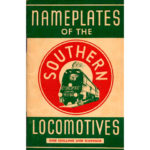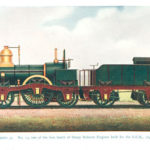Description
Despite the fact that Richard Maunsell Chief Mechanical Engineer of the South Eastern & Chatham had been based at Ashford, it was inevitable after his appointment to a similar post on the amalgamated Southern Railway, that Ashford works would have to play second fiddle to the much newer and up-to-date facilities of Eastleigh of the London & South Western and Lancing of the London Brighton & South Coast. Henceforth all carriage building and most new locomotive building would move away, leaving Ashford to build wagons, manufacture spare parts and carry out loco repairs. Not that the place could not turn out very fine work when money was available. The elegant locomotives and rolling stock produced by Harry Wainwright for the “Continental Express” would stand comparison with anything produced by the bigger railways in Britain.
This is essentially a history of the works themselves so there are no long lists of locos built and little about the personalities of the “Bosses”. For example no explanation is given for Wainwright’s early retirement, apparently due to a combination of personal problems and the herculean task of welding the loco departments of two impoverished railways into an efficient whole, causing what would now be recognized as a nervous breakdown.
Maunsell had barely sat at his desk at Ashford when the Great War started and in a matter of weeks munitions work took priority over railway work and it would be 1917 before a new locomotive left the shops, because the Government belatedly realized that an engine shortage was hampering the “War Effort”. Maunsell’s first design was a large 2-6-0 mixed traffic locomotive the very successful “N” class – much bigger than anything the Works had produced before. With the formation of the Southern he was very conscious that Ashford felt a bit like Cinderella and to the end of his tenure made a point of attending the Foremen’ Association Annual Dinner, where he would reveal plans for the work to be allocated to Ashford in the coming year. The booklet makes clear that this was just one of many sporting and social events revolving around the Works each year
Maunsell’s successor, Oliver Bullied also took office shortly before war broke out with its demands upon the Works for munitions work but this period did see a return to loco building with the startlingly austere Bullied 0-6-0. Perhaps even more surprising was the fact that the very last locomotive built at Ashford in its Centenary Year was a Stanier 8F 2-8-0 for the London Midland & Scottish Railway!
Considering that paper rationing was still in force, particularly for the expensive coated papers needed for reproducing illustrations, this is a good quality publication for the period – reflected in the cover price of 2s.0d. I like to think that the Southern Top Brass and particularly Public Relations Officer Cuthbert Grasemann, whom I suspect wrote much of this booklet, felt that “Cinderella” deserved a 100th birthday present!
PREVIEW BELOW – MAY TAKE A WHILE TO LOAD.





Reviews
There are no reviews yet.